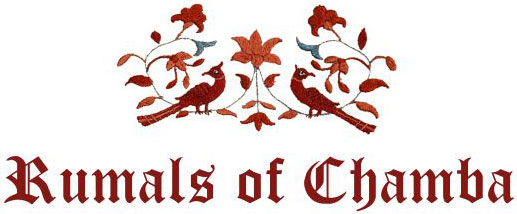Our Chamba rumal' Raas Lila' displayed in Sutr Santati exhibition at National Museum, New Delhi

Chamba Rumals have origins in the Rajput courts of undivided Punjab - Himachal. With a depiction of imagery associated with the worship of the Hindu God Krishna, they were created with fine silk on muslin and used as wall hangings, thaal posh or coverlets for gifting, and other kinds of household items. These formed customary components of a bride’s dowry.
This textile is inspired by a rare Chamba rumal in the collection of the Philadelphia Museum of Art in the USA from the 18th or 19th century. Its imagery was hand drawn by the miniature artist, and rendered in double-sided long, short darning and cross stitches. It shows the Raas Lila, with the enduring theme of Radha and Krishna in a dance. The conceptualiser points out that the most eye-catching element here is the way in which the embroideries have captured the lyrical movement of the figures. With the high quality visible in the rumal, the art seems to have reached a confident phase of its revival, which can lend itself to product diversification in the future.
Raas Lila I Unbleached/ Kora Muslin (300 counts), Untwisted Silk (mulberry silk — 5 ply) I Natural Dyes I Hand Embroidery (Chamba rumal) I Conceptualised by Dr Rohini Arora — Rumals of Chamba I Created by Prixit Sharma (miniature art) and Anita Devi (embroidery) I Chamba, I Himachal Pradesh
Our Chamba rumal' Raas Lila' displayed in Sutr Santati exhibition at National Museum, New Delhi








